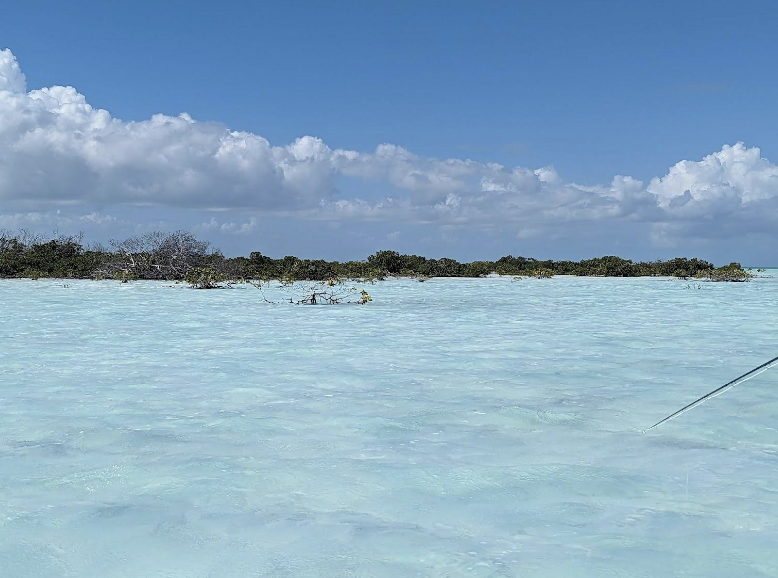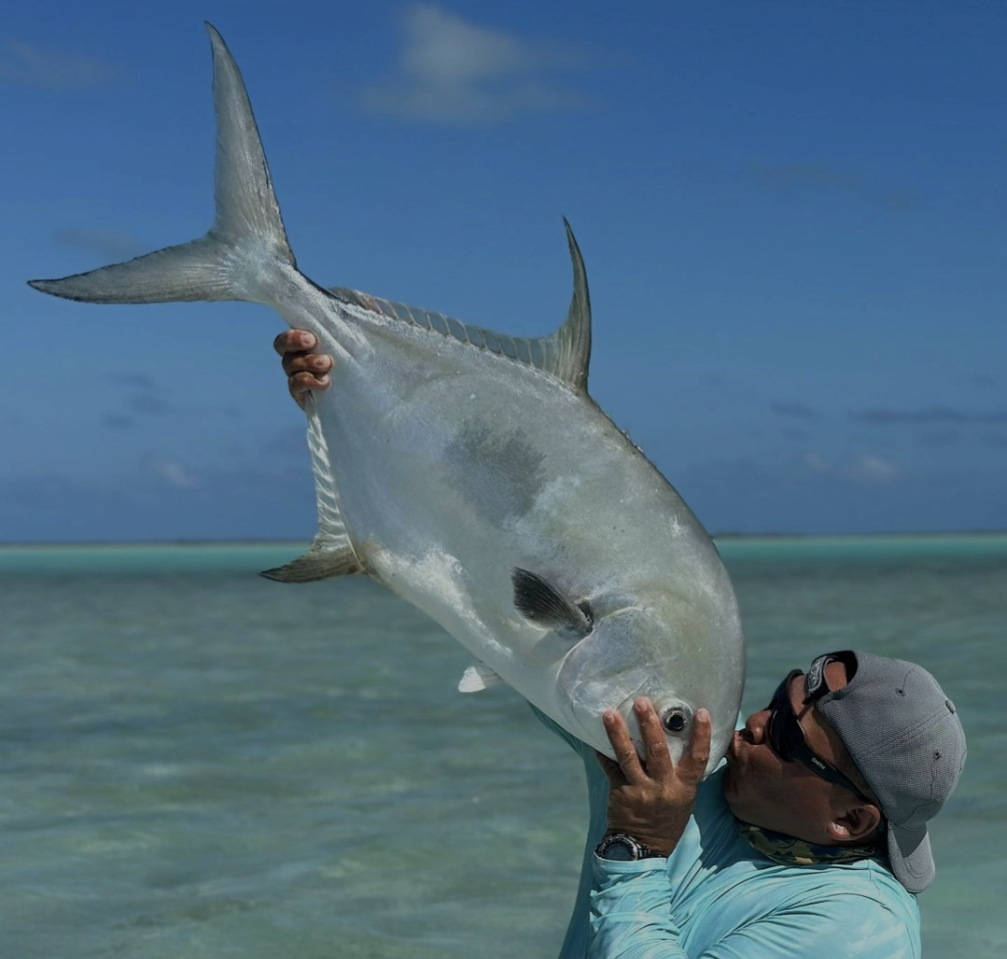
CAYO CRUZ, CUBA
February 8-15 2026
Fly Fishing an Enormous System of Flats, Lagoons & Pristine Estuaries
The flats on the northern side of the main island of Cuba present an inviting combination of hard-packed white sand and a semi-firm mottled bottom that still provides good wading. Collectively referred to as Cayo Romano and Cayo Cruz, this is our preferred destination in Cuba for those who like to wade or those who are focused on permit and bonefish (though tarpon and snook can also be found along with other target species). Cayo Cruz and Cayo Romano waters demonstrate all the characteristics of a recently-discovered, virgin fishing territory – large numbers of fish, good size, and an evident lack of exposure to flies and leaders. Add to this the natural beauty of the cays and water and you have a truly memorable place to fish with accommodations that are a five-minute walk to the skiffs.
ACCOMMODATION DETAILS
Lodging Details
For all Cayo Romano trips, anglers will be accommodated in a luxury beachfront hotel. This three-story hotel offers 60 rooms, a swimming pool, bar, lounge, a variety of restaurants (including Japanese and Mediterranean-themed restaurants), a bowling lane, a spa, a rum and cigar store, and a salon. The hotel is a five-minute walk literally across the street to meet your guide and skiffs each morning. The second-story infinity pool with views of the flats and nearby bar provides anglers with the perfect cool-down option after a long day on the water.
Typical Length of Stay
The structured package is seven (7) nights / six (6) fishing days. A normal week includes six full days of fishing.
Non-Angling Activities and Options
This is a remote key off the northern coast of Cuba located in the mangrove and saltwater wilderness of the area surrounding the key of Cayo Cruz. Non-angling activities are limited to beach and resort activities. Overall this destination is best suited for anglers.
Internet/Communications
Wi-Fi is typically unpredictable at best in Cuba, though it is available at the hotel. Check with your cell service provider to see if your U.S. cell phone will work in Cuba. Also, satellite phones are prohibited in Cuba and will be confiscated at the airport upon arrival.
Documents Required
A valid passport is required for all visitors to Cuba and must be valid for at least six (6) months beyond the duration of your stay. Citizens of the United States must also have a Cuban entrance visa that can be secured when checking in for your direct flight to Cuba. You will be asked to sign an affidavit for your trip to Cuba and determine which OFAC category your trip qualifies for, and as an American traveler, you are obligated to maintain a record of your trip for five years.
General Fishing Information
Located on the north shore of the eastern province of Camaguey, the Cayo Romano fishery is an enormous system of flats, lagoons, and pristine estuaries. Located on the eastern portion of the greater Jardines del Rey (Gardens of the King) fishery, commercial fishing within this designated area is strictly forbidden and rigorously enforced. The sportfish-only area is 366 square kilometers in size, meaning that on an average day, each skiff has over 50 square kilometers to itself. The fishing area is virtually untouched and represents one of the cleanest and most biologically diverse ecosystems in the Caribbean. This is one of the primary reasons we have chosen this destination. It is still more or less untouched and has only seen a handful of anglers for a few seasons. The fish are plentiful and aggressive. Cayo Romano is also privileged in having an extensive string of cays on its northern border which protects it from all but the most violent of weather patterns.
The flats present an inviting combination of hard-packed white sand and a semi-firm mottled bottom that still provides good wading. And what a place this is for those who like to wade! It’s very similar to Los Roques, Venezuela in terms of the vast area that’s wadable; there are places here where you can wade for hours without heading back to the boat. Cayo Romano demonstrates all the characteristics of a recently-discovered, virgin fishing territory – large numbers of fish, good sizes, and their evident lack of exposure to flies and leaders. Add to this the natural beauty of the cays and water and you have a truly memorable place to fish.
The average bonefish weighs in at a healthy three to four pounds. During the course of a week, it is not unheard of for anglers to land a fish or two in the eight-pound-plus range. Tailing bonefish are common and guests can expect to see bonefish in singles and doubles, all the way up to schools of several hundred fish. What really sets this location apart from so many other fisheries is that guests can expect to encounter and get shots at good numbers of permit each day as well. There are very few places on earth where guests can fish for big bonefish each day and also get shots at tailing permit. This combination may occur in other locations, but not with the consistency seen at Cayo Romano. It is a rare day when you don’t encounter and get shots at permit. The permit will range in size from approximately eight to 30 pounds. The flats at Cayo Romano are a little deeper than those found in other regions of Cuba, which means bonefish and permit are found in excellent numbers throughout the year. Aside from the exceptional flats fishing, guests must remember that this new fishery is still very much in its infancy. Nonetheless, the fish are usually plentiful and aggressive.
Two locations within the Cayo Romano area offer good tarpon fishing. Guides tend to save these areas for when an angler has already boated a permit and is looking for a Grand Slam. These fish will range from 30 to 90 pounds. Besides fishing for permit, bonefish, and tarpon, you will also cast for other challenging species such as mutton snapper, snook, cubera snapper, jack crevalle, and barracuda.
Each morning, skiffs will depart from Cayo Romano to different zones and areas within the greater Cayo Romano / Cayo Cruz fisheries. From Cayo Paredon Grande in the north to Cayo Guanaja and Versailles in the south, countless islands, lagoons, and bays will keep anglers happy and on fish throughout the day. Much of the fishing takes place in the areas between the island and the mainland, in and around the massive island of Cayo Cruz. The average boat run to the fishing areas can range from 10 to 40 minutes in length. The run time depends on where your guide wants to take you that day and your requests. With more than 50 square kilometers of fishing area available per boat, the options are just about limitless. There are so many great aspects to this fishery that it can be a sensory overload sometimes.
Boats and Equipment
The fishing boats used by Avalon are Dolphin Super Skiffs outfitted with Yamaha 60 or 70 HP motors. Radios and life jackets are carried aboard every skiff. As is the case with most areas in Cuba, be prepared to bring all your rods, reels, and lines with you! Flies, leaders, tippet, all terminal tackle, and all accessories should also be packed, as very few items are available anywhere in Cuba.
Pricing Breakdown
$5,600 For 7 nights and 6 Days of Fishing)
(Single Room) Includes all food, alcohol, coffee, espresso and a Cuban cigar night.
Preserve Fee and License for fishing
Busing from and to the airport (2 hour ride)
Tips: $150 for hotel staff at the end of the week.
$300 for guide tips ($50 a day for a shared boat)
Additional Cost:
Equipment (I can provide fly fishing equipment upon request)
Visa $85
Two-Way Airfare to Miami International Airport and Next Morning Flight to Camaguey, Cuba Airport.
One night in Miami (we stayed at the Embassy Suites $260)
Bag Checks $60 (I suggest adding priority to boarding so you can keep your travel rod and gear case with you.
Additional Bag Checks to Cuba can be upwards of $200. We suggest bringing one checked bag, a 4 piece travel rod case and a personal small bag for a carry on.
*Trip Insurance: $155 insurance for $5000
We will be all traveling together as we will meet at the hotel which is to be determined. A shuttle, Taxi or Uber will be the easiest way to get to and from the airport in Miami. While traveling as a group from Miami to Cuba.
Upon Committal we are asking for a 30% deposit. With additional due for final payment 6 months from departure.
This trip was brought to you by Captain Tuck Scott of Building Anglers and Host Captain Brian Kelly of RPS Fishing.
Thank you for your interest! If you have any further questions feel free to email or call me at 617.721.4473.
Captain Brian Kelly













